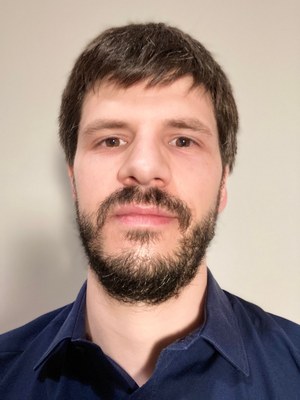RicERCatori in Evidenza - The mysteries of the Universe, amidst the Higgs boson and top quarks
Answers to questions about the birth and possible fate of our Universe can be found in the interactions between elementary particles. But how can we study these interactions? Tiziano Peraro, a researcher at the University of Bologna's Department of Physics and Astronomy, tells us how.
 What scientific challenge does the project for which you won ERC funding respond to?
What scientific challenge does the project for which you won ERC funding respond to?
FFHiggsTop (High-precision multi-leg Higgs and top physics with finite fields) is a research project focusing on the theoretical physics of fundamental interactions, a branch of physics concerned with identifying the smallest and most indivisible constituents of matter, known as elementary particles. A key aspect of this research is to understand how these particles interact with each other, thanks also to experiments carried out in particle accelerators such as the Large Hadron Collider (LHC) in Geneva. FFHiggsTop aims to study the interactions between the most recently discovered elementary particle, the Higgs boson, and the heaviest elementary particle we know, the top quark.
What are the contents and goals of this research project?
The main goal is to challenge current theoretical models on particle interactions, shedding light on their most uncertain aspects. To do this, we will develop new methods for making highly accurate theoretical predictions on particle interactions, and then use these predictions to characterise the interactions between the Higgs boson and the top quark. The comparison between the predictions made and the experimental data collected at the LHC particle accelerator will make it possible to test the limits of our theoretical models, paving the way for the discovery of a new type of physics.
What are the elements that make this research particularly innovative in terms of its method?
The complexity of the calculations involved is the main limitation to the possibility of studying particle interactions, which are of crucial importance for answering countless questions. My project will make use of innovative mathematical and computational techniques that will make it possible to replace complex algebraic calculations with much simpler ones. Further development of these techniques will make it possible to obtain high-precision theoretical predictions on processes involving interactions between the Higgs boson and the top quark.
What are the benefits or impacts of your research on society? Can you give us some concrete examples?
Like all basic research, this project aims to expand our knowledge of nature. It is the starting point of a long process that can lead, in initially unpredictable times and ways, to discoveries and practical applications that are revolutionary for the progress of society. For example, just think of the physicists who over centuries discovered the laws of electromagnetism: they could certainly never have imagined - back then - that one day we would have electricity in our homes and be surrounded by ever-evolving electronic devices whose creation derives directly from their initial discoveries.
What does this grant mean for your research path?
The impact has been very positive and I hope that the ERC funding will enable me to build a very strong research team with which to aim for ever more ambitious scientific goals.
I am also pleased to contribute to the expansion of the study of theoretical physics, a discipline that has been growing steadily in recent years, within the Department of Physics and Astronomy at the University of Bologna.
RicERCatori in Evidenza is the column dedicated to the University of Bologna's cutting-edge research funded by the European Research Council-ERC and its protagonists.
